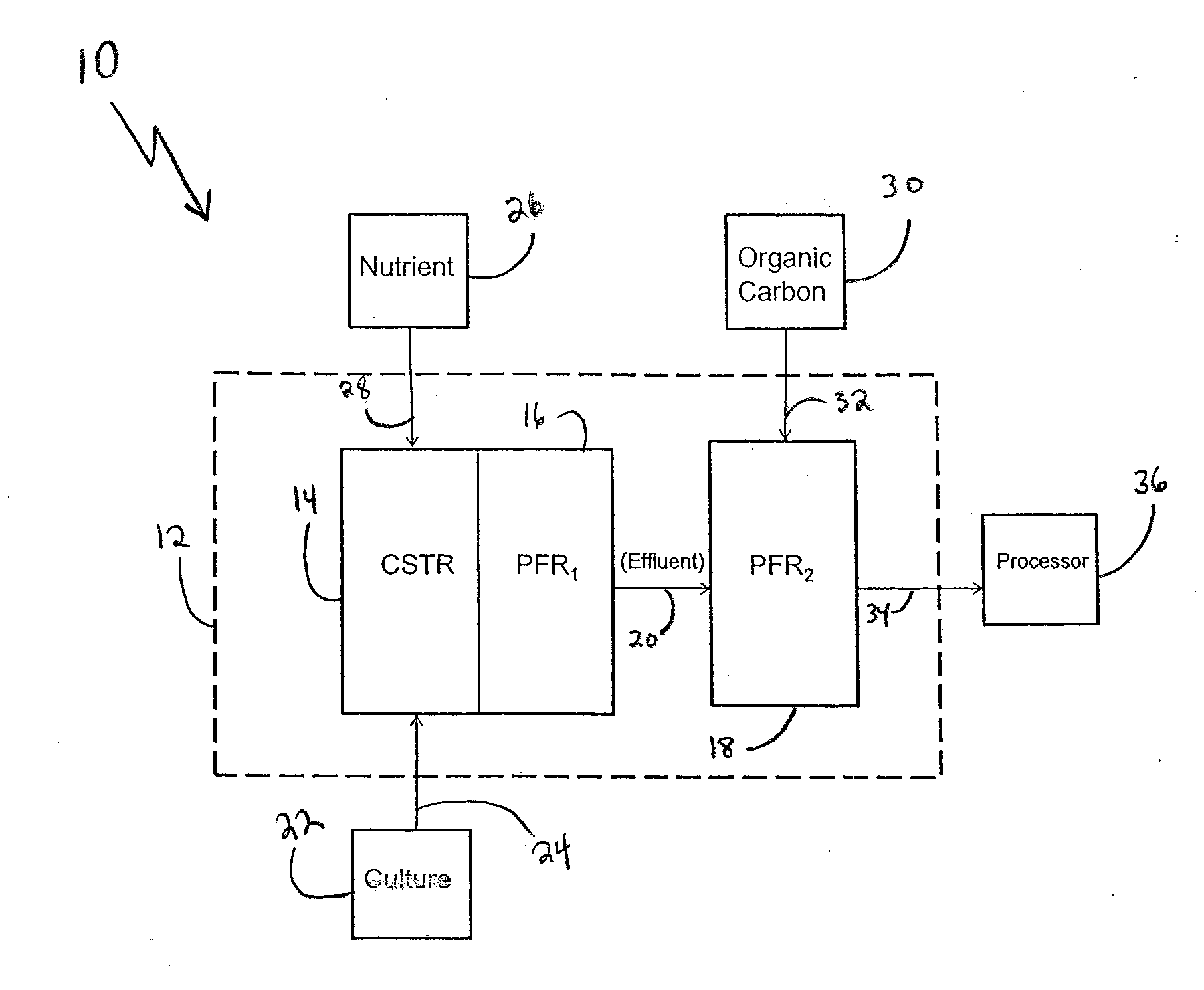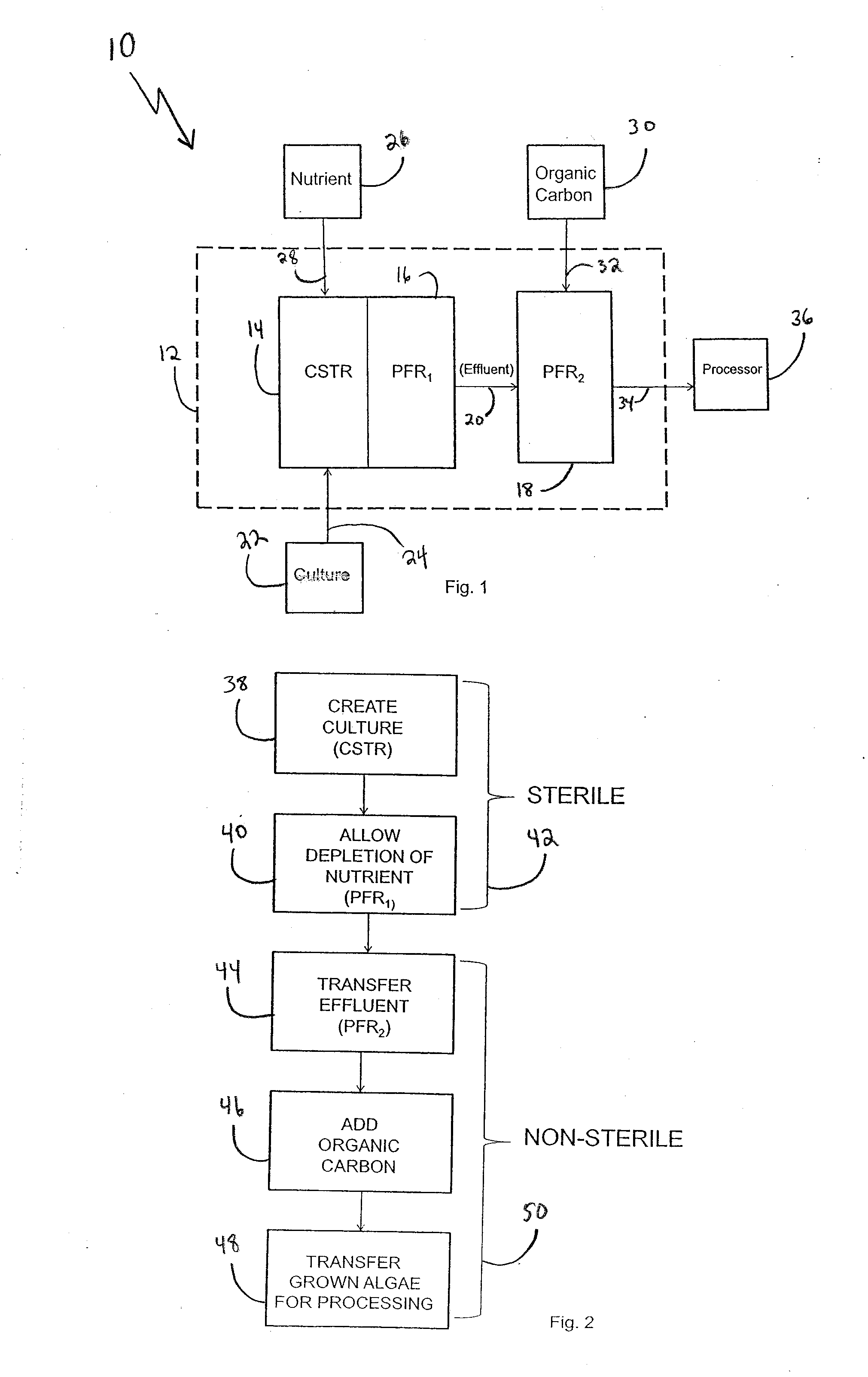System and Method for Non-Sterile Heterotrophic Algae Growth
- Summary
- Abstract
- Description
- Claims
- Application Information
AI Technical Summary
Benefits of technology
Problems solved by technology
Method used
Image
Examples
Embodiment Construction
[0012]Referring initially to FIG. 1, a system as envisioned for the present invention is shown and generally designated 10. As shown, a bioreactor 12 is provided and has three major components: a CSTR 14, a first PFR 16, and a second PFR 18. Within the bioreactor 12, a transfer pipe 20 is also provided to connect the first PFR 16 and the second PFR 18.
[0013]Still referring to FIG. 1, additional components of the system 10 are located outside of the bioreactor 12 as shown. In particular, a culture source 22 is connected to the CSTR 14 by a first inlet pipe 24. In addition, a nutrient source 26 is also connected to the CSTR 14 by a second inlet pipe 28. An organic carbon source 30 is shown and is connected by a conduit 32 to the second PFR 18. Also, an outlet pipe 34 is connected between the second PFR 18 and a processor 36 that is used to separate the oil from algae cells as a first step in creating biofuel.
[0014]From an operational perspective, FIG. 1 shows that algae cells are move...
PUM
 Login to View More
Login to View More Abstract
Description
Claims
Application Information
 Login to View More
Login to View More - Generate Ideas
- Intellectual Property
- Life Sciences
- Materials
- Tech Scout
- Unparalleled Data Quality
- Higher Quality Content
- 60% Fewer Hallucinations
Browse by: Latest US Patents, China's latest patents, Technical Efficacy Thesaurus, Application Domain, Technology Topic, Popular Technical Reports.
© 2025 PatSnap. All rights reserved.Legal|Privacy policy|Modern Slavery Act Transparency Statement|Sitemap|About US| Contact US: help@patsnap.com


